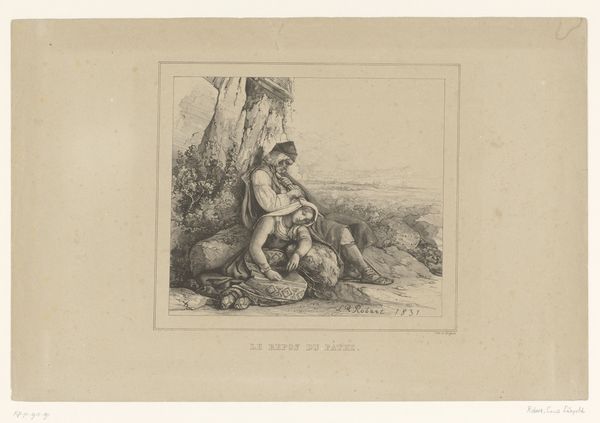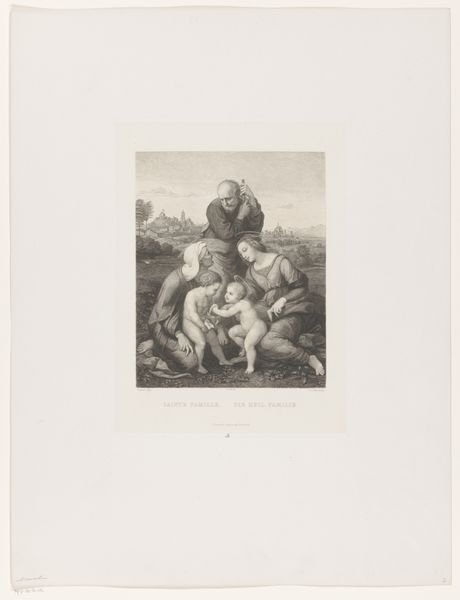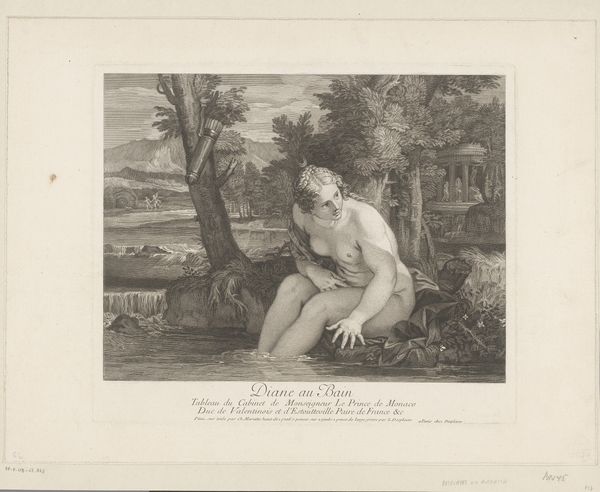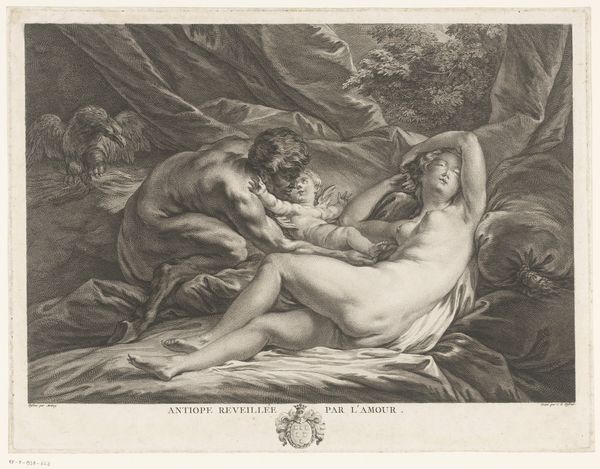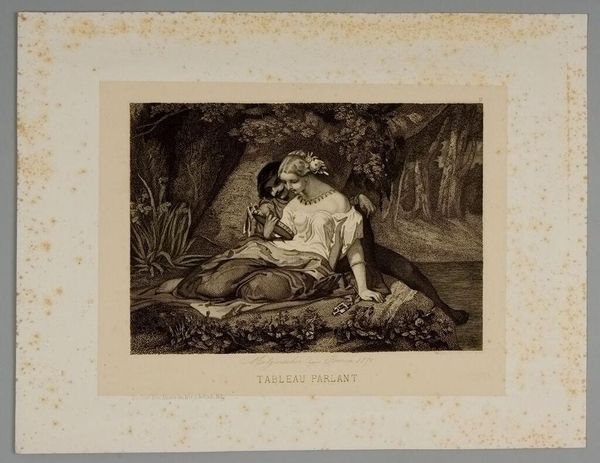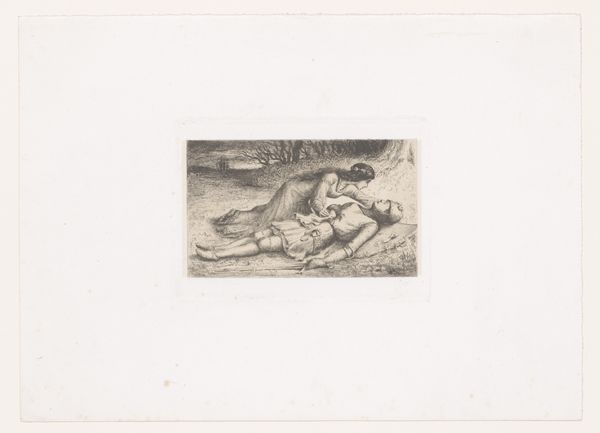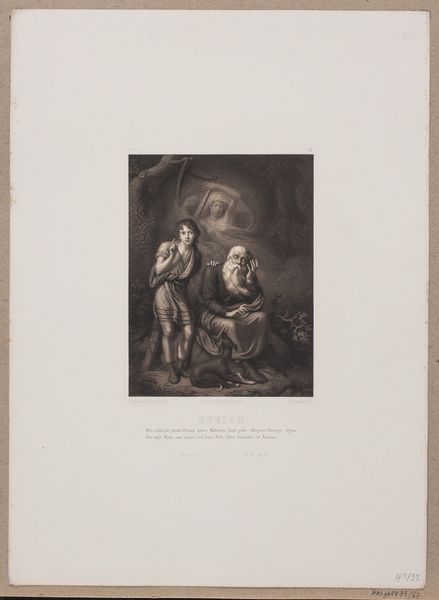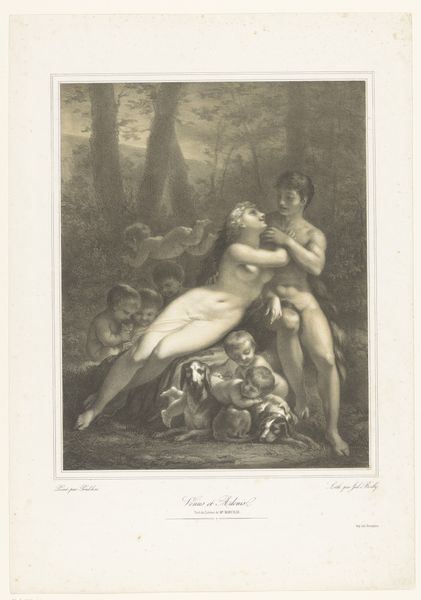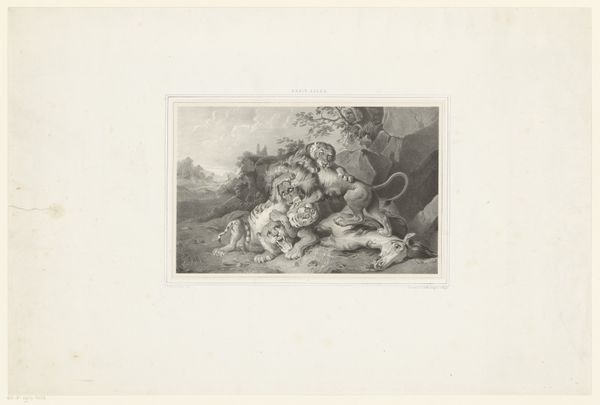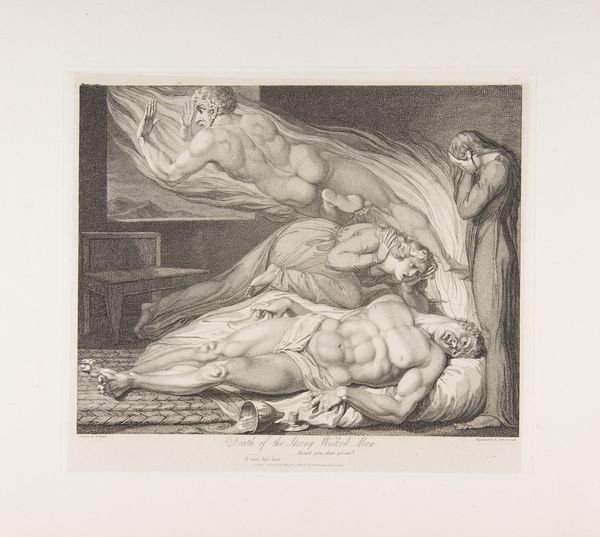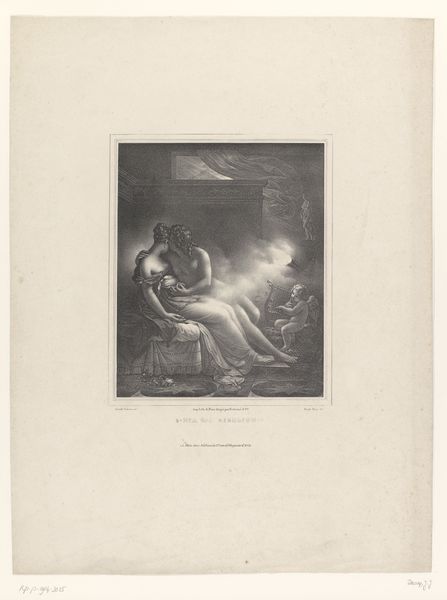
Dimensions: 285 mm (height) x 400 mm (width) (billedmaal)
Curator: A lithograph with pencil details titled "Philoktet," created in the 1880s by Adolph Kittendorff. The piece resides here at the SMK. It depicts a male figure, nude, crouched down, tending to what appears to be an injury on his foot, a spotted animal near him. Editor: Immediately, I’m struck by the high contrast and overall somber mood. The figure seems intensely focused, caught in a moment of vulnerability, despite his evident muscularity. Curator: It certainly captures a sense of suffering, echoing the themes of the Greek tragedy of Philoctetes, abandoned on an island with a festering wound. The artistic currents of the time romanticized such scenes, playing into the 19th century's obsession with human emotion and historical themes. Editor: Precisely, the artist utilizes the chiaroscuro technique to emphasize the raw emotion of the figure’s physical state. Look at the contrast in textures—the smooth skin against the roughly shaded background creates an interesting play of depth and form, contributing to the overall intensity. Curator: And context is critical here. Kittendorff was working within a cultural landscape steeped in classical learning. His rendition brings that mythological world to a modern audience grappling with questions of pain, abandonment, and the heroic spirit. Think of the role institutions played, such as art academies, that would validate history paintings with themes like these. Editor: Note how his positioning makes his figure seems almost contorted; there’s an uncomfortable beauty in the pose itself. Also, is it just me, or is the placement of that leopard a bit awkward? It seems included solely to act as contrast in texture and doesn't seem to naturally interact with the space. Curator: I see what you mean, although one might consider that inclusion allegorically, symbolizing his exile, a visual reminder of Philoctetes' solitude, contrasting civilized life. This would align it to history painting in that moment, and those academic approaches. Editor: That is plausible, however, the animal appears staged rather than integrated. Nevertheless, regardless of those oddities, I find myself resonating with its dramatic and tormented qualities. Curator: Agreed. "Philoctetes" showcases not just Kittendorff's technical prowess but the historical currents that informed his vision. A testament to art's power in carrying narratives through generations. Editor: Ultimately, this print is a solid rendering of pain; both aesthetically pleasing and poignant, despite its slight formal tensions.
Comments
No comments
Be the first to comment and join the conversation on the ultimate creative platform.

